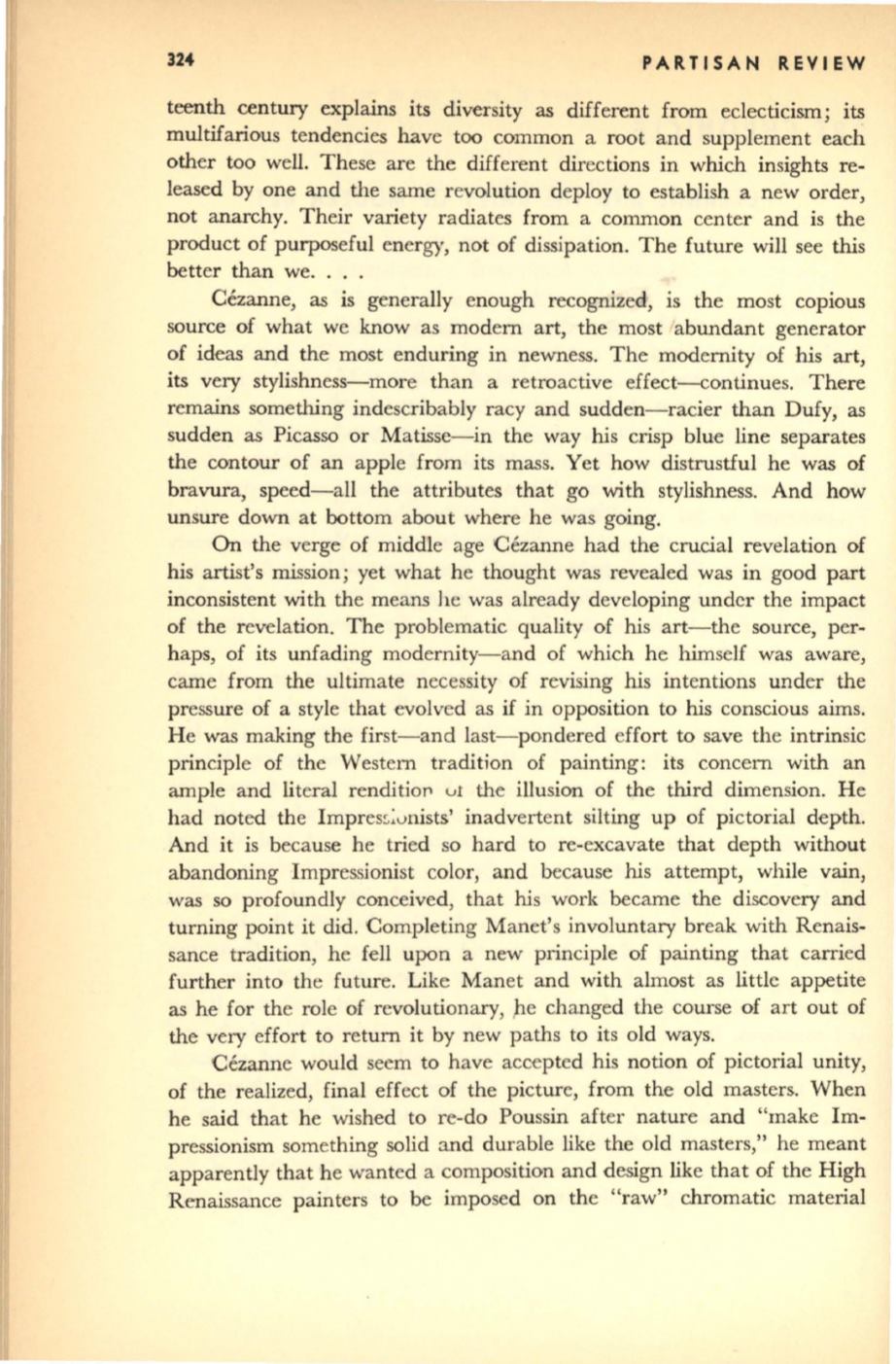
324
PARTISAN REVIEW
teenth century explains its diversity as different from eclecticism; its
multifarious tendencies have too common a root and supplement each
other too well. These are the different directions in which insights re–
leased by one and the same revolution deploy to establish a new order,
not anarchy. Their variety radiates from a common center and is the
product of purposeful energy, not of dissipation. The future will see this
better than we. . . .
Cezanne, as is generally enough recognized, is the most copious
source of what we know as modem art, the most abundant generator
of ideas and the most enduring in newness. The modernity of his art,
its very stylishness-more than a retroactive effect-continues. There
remains something indescribably racy and sudden-racier than Dufy, as
sudden as Picasso or Matisse-in the way his crisp blue line separates
the contour of an apple from its mass. Yet how distrustful he was of
bravura, speed-all the attributes that go with stylishness. And how
unsure down at bottom about where he was going.
On
the verge of middle age Cezanne had the crucial revelation of
his artist's mission; yet what he thought was revealed was in good part
inconsistent with the means he was already developing under the impact
of the revelation. The problematic quality of his art-the source, per–
haps, of its unfading modernity-and of which he himself was aware,
came from the ultimate necessity of revising his intentions under the
pressure of a style that evolved as if in opposition to his conscious aims.
He was making the first-and last- pondered effort to save the intrinsic
principle of the Western tradition of painting: its concern with an
ample and literal renditioT' ut the illusion of the third dimension. He
had noted the
Impres~~vnists'
inadvertent silting up of pictorial depth.
And it is because he tried so hard to re-excavate that depth without
abandoning Impressionist color, and because his attempt, while vain,
was so profoundly conceived, that his work became the discovery and
turning point it did. Completing Manet's involuntary break with Renais–
sance tradition, he fell upon a new principle of painting that carried
further into the future. Like Manet and with almost as little appetite
as he for the role of revolutionary, he changed the course of art out of
the very effort to return it by new paths to its old ways.
Cezanne would seem to have accepted his notion of pictorial unity,
of the realized, final effect of the picture, from the old masters. When
he said that he wished to re-do Poussin after nature and "make Im–
pressionism something solid and durable like the old masters," he meant
apparently that he wanted a composition and design like that of the High
Renaissance painters to be imposed on the "raw" chromatic material


